Fuel Cell Electric Vehicle
A fuel cell generates electricity through an electrochemical reaction of hydrogen and oxygen that occurs within the vehicle itself. Fuel cell vehicles are also driven by an electric motor but instead of being powered by a battery they create the electricity in an onboard fuel cell usually using oxygen from the air and stored.
 Center Fuel Cell Electric Vehicles Hydrogen Fuel Cell Fuel Cell Fuel Cell Cars
Center Fuel Cell Electric Vehicles Hydrogen Fuel Cell Fuel Cell Fuel Cell Cars
In these vehicles the chemical energy of.
Fuel cell electric vehicle. AFP via Getty Images Toyota was one. Instead it can be simply refueled in 3 to 5 minutes at a hydrogen station. Like all-electric vehicles fuel cell electric vehicles FCEVs use electricity to power an electric motor.
FCEVs and the hydrogen infrastructureto fuel them are in the early stages of implementation. Fuel cells or batteries. Fuel cell electric vehicles FCEVs are powered by hydrogen.
A tiny market that includes Toyotas Mirai Hyundais Nexo and Honda Motors Clarity Fuel Cell these plug-less EVs are the alternative to their battery electric cousins. So a big advantage of FCEVs versus BEVs is fuel cells dont require recharging like batteries. We have but two choices to power allelectric vehicles.
Youll learn the benefits and essential sustainability features to consider. Welcome to the world of hydrogen fuel cell electric vehicles FCEVs. Fuel cell electric vehicles FCEVs have gone through several stages of proving their efficiency safety and reliability but have been overlooked as other batteryelectric driven technologies monopolise the hype and hoopla.
Although its an electric vehicle there is never a need to charge the car with a plug. The Mirai is a hydrogen-powered fuel cell electric vehicle that must be fueled at hydrogen stations conforming to the latest Society of Automotive Engineers SAE hydrogen fueling interface protocol standards or laws that may supersede such SAE standards. As with other electric vehicles fuel cell electric vehicles are equipped with regenerative braking systems to capture the kinetic energy normally lost during breaking and store it in the battery.
The new Toyota Mirai a hydrogen fuel cell electric vehicle on display at the 2019 Los Angeles Auto. Fuel cells derive their power from hydrogen stored on the vehicle. In contrast to other electric vehicles FCEVs produce electricity using a fuel cellpowered by hydrogen rather than drawing electricity from only a battery.
In contrast the electricity for a BEV is generated outside the vehicle and stored in the vehicles battery pack. It is a type of electric vehicle that employs fuel cell technology to generate the electricity required to run the vehicle. Differentiated from a BEV is a fuel-cell electric vehicle FCV which derives electrical energy from a fuel-cell system using a form of hydrogen or methanol.
With this in mind this infographic from First Aid Wheels is designed to assist you with learning about two sustainable car fuels and how each can contribute to the future of green motoring. Now were proud to introduce the second generation with a 30 increase in range better handling and sharper styling. The fuel-cell system makes electricity which then charges a battery which acts as the energy storage mechanism to provide the motive power.
Fuel cell electric vehicles FCEVs combine hydrogen stored in a tank with oxygen from the air to produce electricity with the water vapor I drank being the by-product. A fuel-cell vehicle FCV such as the Clarity Fuel Cell is a long-range all-electric vehicle that uses a fuel-cell stack to create electricity on demand. This electricity is generated using a fuel cell-powered by hydrogen instead of a battery pack.
Drivers can refuel FCEVs at a traditional gasoline station in less than 5 minutes. Heres a look at how electric vs. They are more efficient than conventional internal combustion engine vehicles and produce no tailpipe emissionsthey only emit water vapor and warm air.
During the vehicle design process the vehicle manufacturer defines the power of the. Launched in 2014 the Mirai was one of the worlds first hydrogen fuel cell electric vehicles and a huge step towards our goal of achieving zero emission mobility by 2050. Fuel cell cars stack up.
Fuel cell electric vehicles use fuel cell stacks to convert onboard gaseous hydrogen to electricity which is then stored in a battery to power the vehicles electric motor. Most FCEVs use a battery for recapturing energy produced during regenerative braking. Fuel cell electric vehicles FCEVs use electricity to power an electric motor.
Fuel Cell Electric Vehicle FCEV also known as Fuel Cell Vehicle FCV or Zero Emission vehicle. Both produce electricity to drive electric motors eliminating the pollution and in efficiencies of the venerable internal combustion engine. Unlike battery-powered electric vehicles fuel cell vehicles dont need to be plugged in and current models all exceed 300 miles of range on a full tank.
 Next Generation Fuel Cell Stack Nissan Technology
Next Generation Fuel Cell Stack Nissan Technology
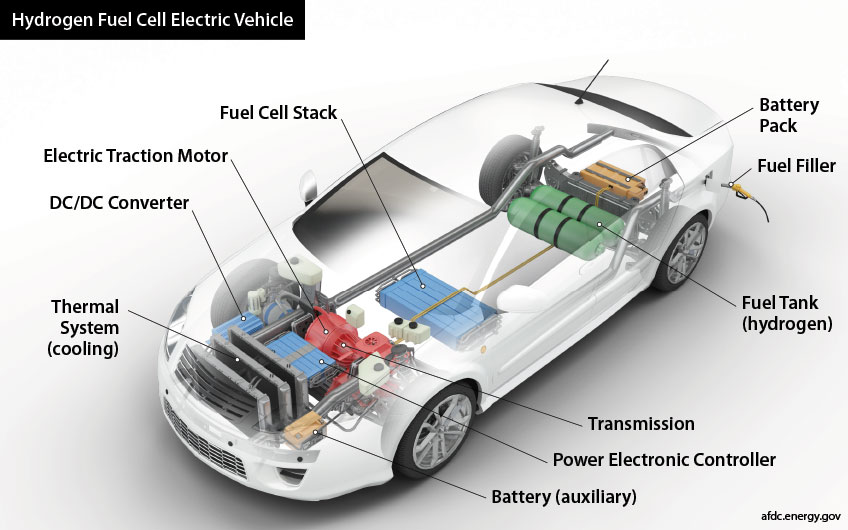 Fuel Cell Electric Vehicle Basics Nrel
Fuel Cell Electric Vehicle Basics Nrel
 Overall System Of Fuel Cell Electric Vehicles Fcev Download Scientific Diagram
Overall System Of Fuel Cell Electric Vehicles Fcev Download Scientific Diagram
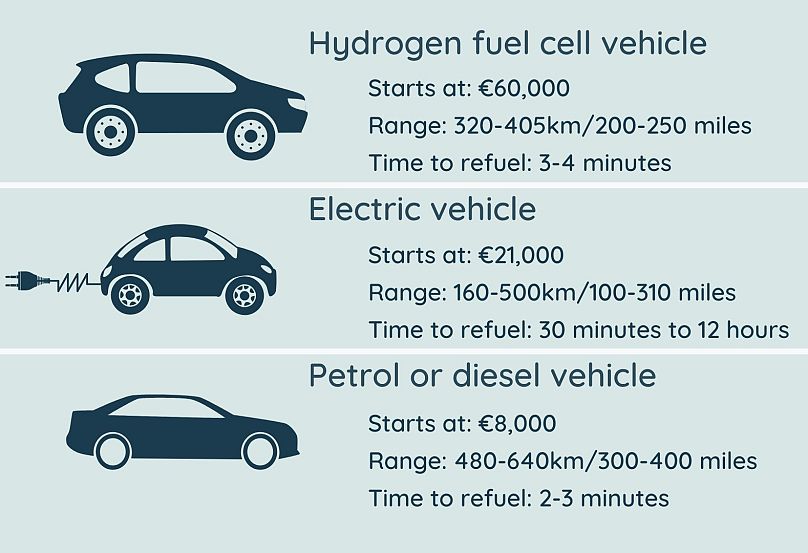 Hydrogen Fuel Cell Vs Electric Cars What You Need To Know But Couldn T Ask Living
Hydrogen Fuel Cell Vs Electric Cars What You Need To Know But Couldn T Ask Living
 Alternative Fuels Data Center Fuel Cell Electric Vehicles
Alternative Fuels Data Center Fuel Cell Electric Vehicles
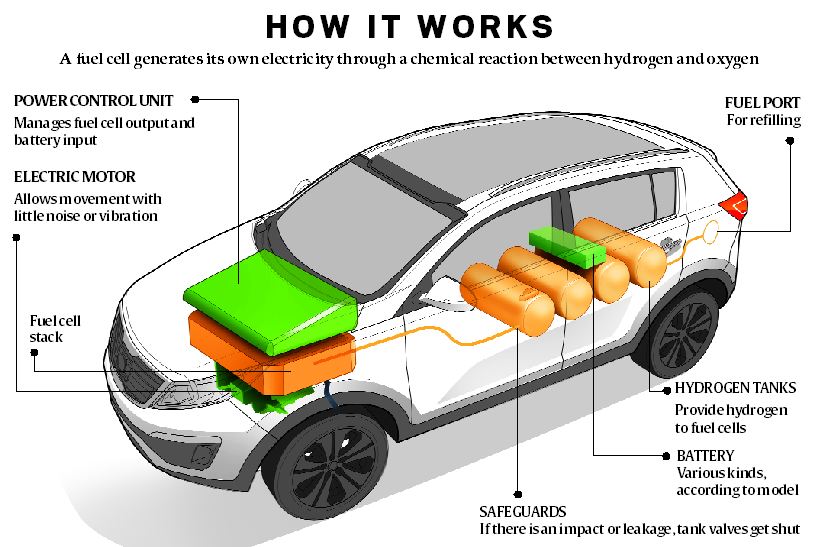 Explained Fuel Cell Electric Vehicles Fcev Civilsdaily
Explained Fuel Cell Electric Vehicles Fcev Civilsdaily
 Hydrogen What S The Attraction Ee Times Asia
Hydrogen What S The Attraction Ee Times Asia
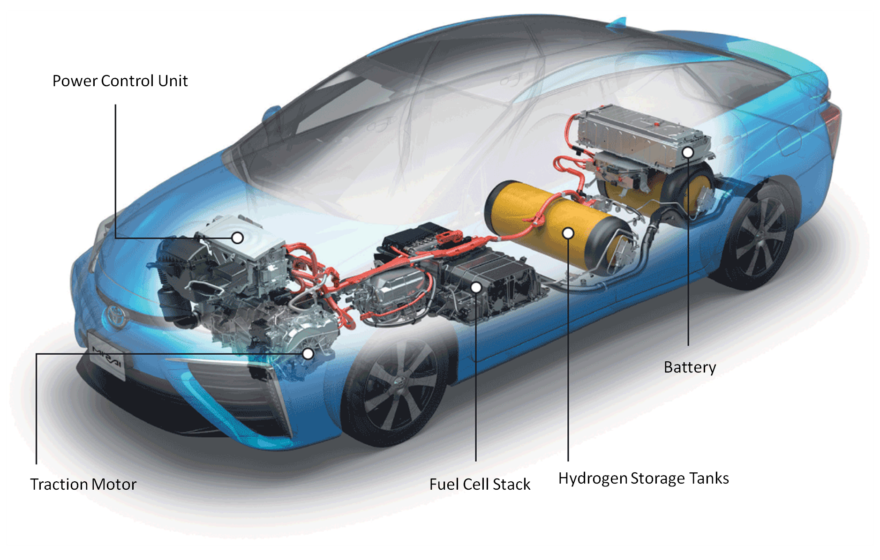 Apa Yang Di Maksud Dengan Fuel Cell Electric Vehicle Fastnlow Net
Apa Yang Di Maksud Dengan Fuel Cell Electric Vehicle Fastnlow Net
 Fuel Cell Mengapa Kini Kurang Diminati Produsen
Fuel Cell Mengapa Kini Kurang Diminati Produsen
 Fuel Cell Electric Vehicle Hyundai Motor Group Tech
Fuel Cell Electric Vehicle Hyundai Motor Group Tech
 Energy Management Of Pem Fuel Cell Supercapacitor Hybrid Power Sources For An Electric Vehicle Sciencedirect
Energy Management Of Pem Fuel Cell Supercapacitor Hybrid Power Sources For An Electric Vehicle Sciencedirect
Hydrogen Transport H2 First Fuels
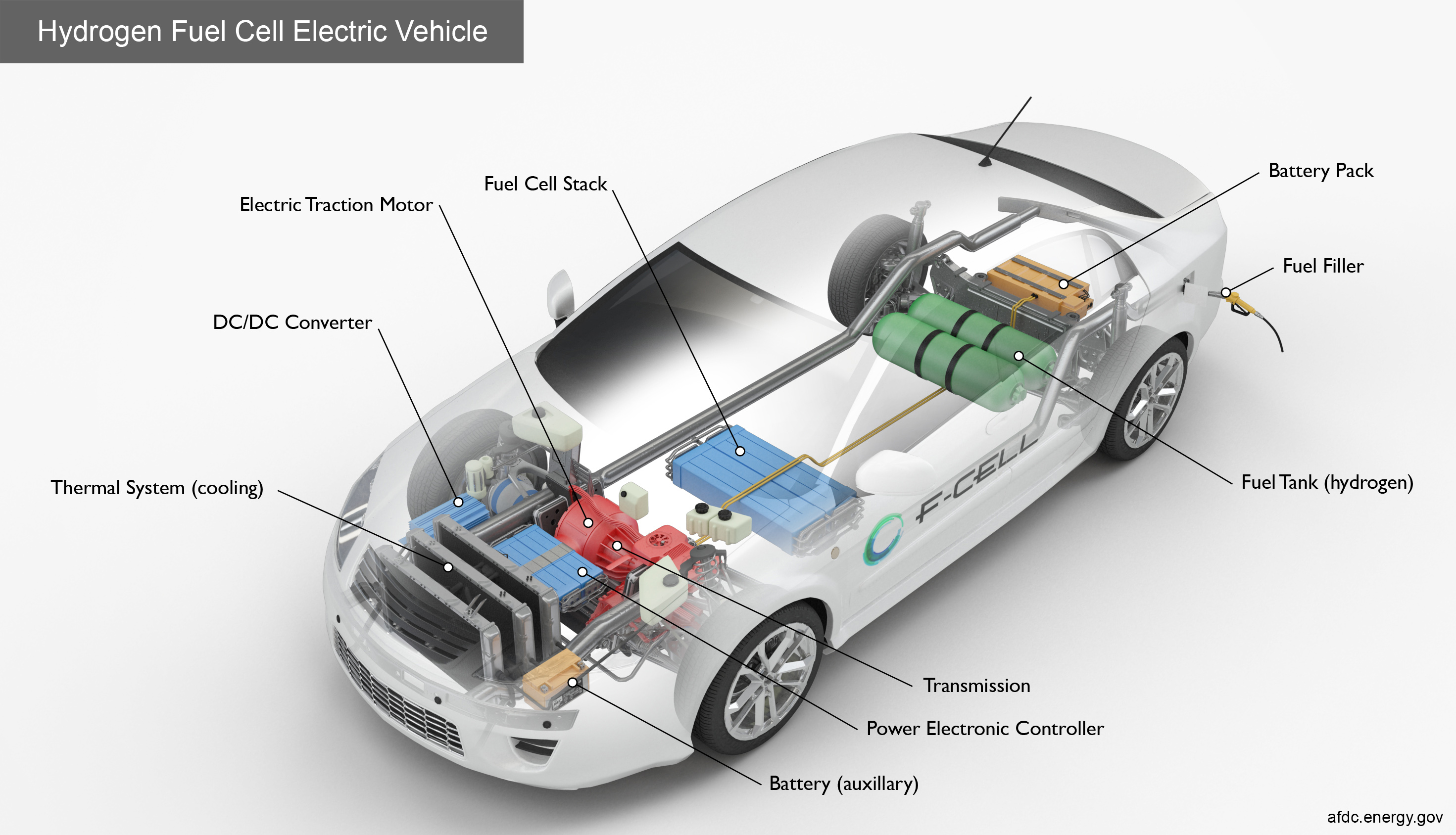 Alternative Fuels Data Center How Do Fuel Cell Electric Vehicles Work Using Hydrogen
Alternative Fuels Data Center How Do Fuel Cell Electric Vehicles Work Using Hydrogen

Comments
Post a Comment